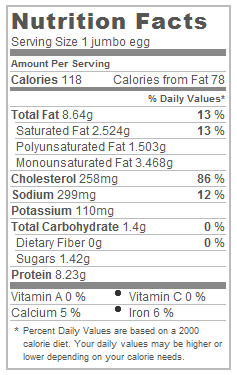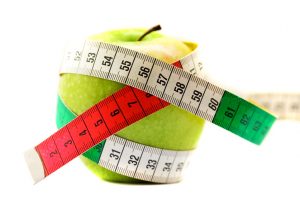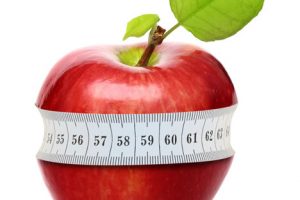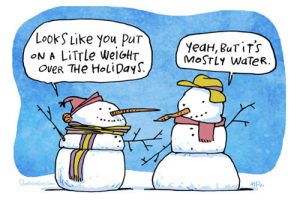If you are seriously interested in losing weight then one of your first steps is to learn how to read a nutrition label correctly. Nutrition labels are in all foods and it is very important to be able to interpret the data from the label and based on that to make the decision on which foods to consume.
For individuals who are trying to become more health-conscious, reading a food label can be difficult. These tips can help you learn how to read a nutrition label and change the way you eat forever.
 Serving size: The most important thing you will take away from a nutrition label is the serving size. For instance, look at the serving size and number of servings on a 16 oz soda or a box of cereal. You may realize that the beverage you have been enjoying at only 120 calories actually has 2 or 3 servings in the bottle or the serving size for your cereal is much smaller than what you pour every morning. (See also: Easy tips to cut 200 calories per day from your diet)
Serving size: The most important thing you will take away from a nutrition label is the serving size. For instance, look at the serving size and number of servings on a 16 oz soda or a box of cereal. You may realize that the beverage you have been enjoying at only 120 calories actually has 2 or 3 servings in the bottle or the serving size for your cereal is much smaller than what you pour every morning. (See also: Easy tips to cut 200 calories per day from your diet)
Calories: The percent daily values on a label are based on a 2000-calorie diet. If you are thin, small, and inactive this may be an overestimation for you. If you are bulky, tall, and athletic this is an underestimation. Before looking at a label, get an estimate of how many calories you should be eating a day. If you use an online calorie calculator, be sure it factors in your age, gender, height, weight, and activity level.
For those trying to lose weight, subtract 300-500 calories. Remember that the calories listed on the box are only for one serving of that food. If there are five servings in a package and you eat the whole thing, that’s five times the calories listed! (See also: The ultimate list of fat burning foods)
Fat, saturated fat, and trans fat: After you have an estimate of the amount of calories you should eat a day divide it by 30. That is the estimate of total grams of fat you should have in a day. Only about one-fourth of those fat grams should be saturated fat. None of it should be trans fat. When a food is well balanced the percent daily value of each nutrient, listed down the side, should be about equal. If a label has a much higher percent daily value for fat than it has for calories, you have yourself a high-fat food. If the percent daily value of saturated fat is higher than total fat, beware: the fat in this food is particularly unhealthy.
Sodium: Generally the milligrams sodium should not be more than twice the amount of calories. Canned soups commonly have disproportionately high sodium for the calories. Why to I compare sodium to calories? Because if you eat a 1200 mg sodium soup that is 200 calories, you have ‘used up’ a large chunk of your daily sodium on a small portion of food. Are you going to eat unsalted food for the rest of the day? Very unlikely. People with high blood pressure should consult their doctor, but should usually aim for about 2000 mg of sodium a day. If you don’t know if you have high blood pressure, or even if you think you don’t, go to get it checked.
Cholesterol: Recent evidence has shown that only about 10% of the population is affected by consuming dietary cholesterol. These individuals should try to keep the total daily cholesterol below 200 milligrams per day. Foods low in cholesterol have less than one tenth the cholesterol compared to calories. For example: a 200 calorie food should have less than 20 mg cholesterol, a 300 calorie food should have less than 30. For those who do suffer from high cholesterol, eating foods enriched with plant sterols may be beneficial. If you do not know if you have high cholesterol, go get it checked!
Carbohydrates, sugar, and fiber: If you know about how many calories you need per day, divide that by 8. That is the total amount of carbs you should have each day in grams. Divide that number again by 5 and that’s the amount of sugar. Yes, it’s a low, low amount! The majority of your daily carbs should not be sugar. Diabetic patients should consult their doctor or dietitian about carbohydrates in their diet. Patients are generally recommended to have about 45 to 60 grams of carbs per meal. This is even a good rule of thumb for the non-diabetic population. If you do not know if you are diabetic, guess what? Go to get your blood sugar tested, along you’re your blood pressures and cholesterol!
Finally, fiber is very important for health and has been linked to successful weight loss. About 25 grams a day is recommended and it can be a hard goal to reach, so if your food is high in calories (in the 400-600 range) it should also be high fiber (5 g or more per serving). (See also: 13 healthy snack ideas for weight loss)
Protein: Protein, like fiber, has been liked with feelings of fullness and reduced appetite. Some people have decided that this link warrants a diet where you consume nothing but protein and fat and cut out carbs completely. High protein diets can result in severe kidney damage, so I strongly discourage this weight loss strategy. Also, carbohydrates are the pretty much only source of energy used by the brain; so if you cut them out don’t expect to be thinking very clearly.
Again, if you know your ideal amount of calories per day, divide that by 20 and you will have a rough estimate of your daily protein requirements in grams. Unless you are building or maintaining a lot of muscle, try not to exceed this number. Contrary to popular belief, supplementing vast amount of protein in your diet is not a great way to gain muscle. Muscle building requires muscle-specific exercises and requires less protein than you might think. Those with kidney disease should speak with a physician or a dietitian about their protein intake.
Vitamins and Minerals: The only vitamins and minerals required to be on a nutrition label are Vitamins A and C, Iron, and Calcium. Deficiencies in vitamins A and C are not very common, however iron deficiency (known as anemia) and calcium deficiency (a risk factor for osteoporosis) are common. Women in particular suffer from anemia and osteoporosis. Unlike for protein, carbohydrates, and fat, the levels of nutrients recommended do not change by weight or height, only by gender and age. Look for the percent daily value and aim to get 100% each day, or else take a multivitamin. Other vitamins and minerals like vitamin E, thiamin, niacin, and phosphorus may be listed on the nutrition label. These are great to know when they are there, but are not listed reliably on all foods.
One or two trips to the supermarket along with these tips can be all it takes to become a master of food for life, something that will definitely come in handy in achieving healthy weight loss!
Summary Tips for Reading the Nutrition Label:
- Check your serving sizes and try measuring them out
- Multiply all other values by the amount of servings you consume
- Learn the amount of calories per day that is right for you
- Calculate the amount of fat and saturated fat you should eat per day
- If you have high cholesterol, aim for less than 200 mg cholesterol per day
- Sodium is too high if it is more than twice the amount of calories
- Have about 45-60 grams carbs at a meal and about 15-30 grams for snacks
- Aim for only about 10% of your daily calories from sugars.
- Snacks should have 2 g or more fiber, meals should have 5 g or more.
- Try to pick snacks with protein but don’t drastically exceed your protein per day
- Aim for 100% of vitamins and minerals each day
- Check your blood sugar, blood pressure, and cholesterol regularly. In fact, do it now.





